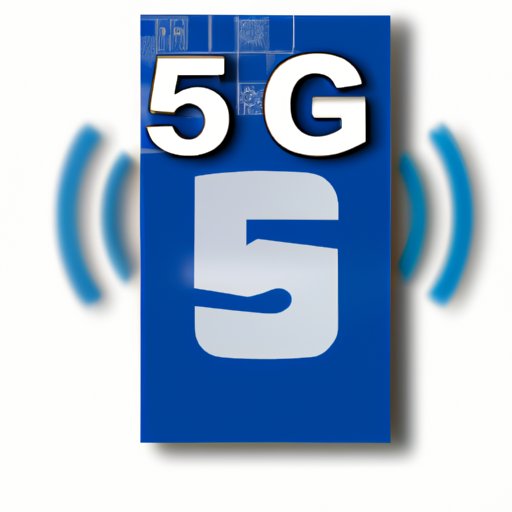
Introduction
When it comes to mobile networking, there are many technical terms that can be confusing. One such term is Physical Cell ID, or PCI. This article aims to clarify what exactly Physical Cell ID is, its importance for cellular network performance, and why it matters for the average user.
Understanding Physical Cell ID: How it Determines Cellular Network Performance
Physical Cell ID is a numerical identifier assigned to each cell in a cellular network. Its function is essentially to help a device locate and communicate with the correct cell. This might seem like a small detail, but it has a significant impact on overall network performance. When a device connects to the wrong cell or has difficulty finding the correct one, it can lead to slower data speeds, poor call quality, and even dropped connections.
Physical Cell ID is different from other network identifiers in that it is specific to each cell, whereas other identifiers like tracking area codes and location areas cover larger areas. This means that Physical Cell ID is the most precise identifier for a device’s location within a network.
The Significance of Physical Cell ID in Mobile Networking
Accurate and reliable Physical Cell ID is crucial for high-quality network performance. When a device connects to the correct cell using the correct Physical Cell ID, it can receive a stronger signal and improved connectivity. This translates to faster data speeds, better call quality, and fewer dropped connections. On the other hand, inaccurate Physical Cell ID can lead to poor performance and a frustrating experience for users.
Issues caused by inaccurate Physical Cell ID can include problems with handover between cells, failed connections, and reduced coverage. These problems can be especially prevalent in areas with overlapping cell coverage, such as in urban areas, where accurate identification of the correct cell can be more challenging.
Exploring Physical Cell ID: A Key Component of 5G Technology
Physical Cell ID is a particularly important component of 5G technology, the latest generation of cellular networks. The faster data speeds and lower latency promised by 5G rely on the ability of devices to quickly and accurately connect to the correct cell, which is made possible by improvements in Physical Cell ID technology.
Advancements in Physical Cell ID for 5G include increased precision and the ability to identify and prioritize multiple signals, among other improvements. These advancements are crucial for enabling the full potential of 5G technology and will continue to be important as the network continues to evolve.

Physical Cell ID: Simplifying the Complicated World of Mobile Networking
The world of mobile networking can be complex and confusing for many users, with numerous technical terms and concepts to understand. Accurate Physical Cell ID simplifies this complexity by providing a clear and reliable identifier for a device’s location within a network. This improves connectivity and provides a better experience for users, who can focus on using their devices without worrying about the technical details.
Understanding Physical Cell ID also provides benefits for users beyond simply improving connectivity. Knowledge of Physical Cell ID can help users troubleshoot issues with their devices and better understand how cellular networks work. This knowledge can be especially useful for those dealing with coverage issues in rural or remote areas, where accurate identification of the correct cell can be essential.
Advancements in Mobile Networking: A Deep Dive into Physical Cell ID
Advancements in Physical Cell ID technology are ongoing and will continue to improve network performance in the future. These advancements include improvements in precision and the ability to better identify and prioritize signals. Additionally, current research is working to develop even more advanced technologies that could revolutionize how cellular networks work.
These advancements in Physical Cell ID will continue to be of critical importance as cellular networks continue to evolve and improve. As more and more devices rely on cellular networks for connectivity, the importance of accurate and reliable Physical Cell ID will only continue to grow.
What You Need to Know About Physical Cell ID for Improved Connectivity
Key takeaways from this article include the importance of Physical Cell ID for cellular network performance, the differences between Physical Cell ID and other network identifiers, and the ongoing advancements in Physical Cell ID technology. For those looking to improve their connectivity, understanding Physical Cell ID can be a valuable tool for troubleshooting issues and optimizing network performance.
For those looking to delve deeper into the world of cellular networking, there are many resources available, including online forums, technical books, and industry reports. Staying informed about the latest developments in Physical Cell ID and other cellular network technologies can help users make the most of their devices and stay connected in even the most challenging network conditions.
Conclusion
Physical Cell ID may sound like a technical term, but it has a significant impact on cellular network performance and user experience. Accurate and reliable identification of the correct cell is essential for fast data speeds, clear call quality, and a seamless browsing experience. As cellular networks continue to evolve and improve, advancements in Physical Cell ID technology will continue to be of critical importance.
For those looking to improve their connectivity, understanding Physical Cell ID and its importance in cellular networking is a valuable tool. With this knowledge, users can troubleshoot issues, optimize their device settings, and make the most of their devices in any network condition.




